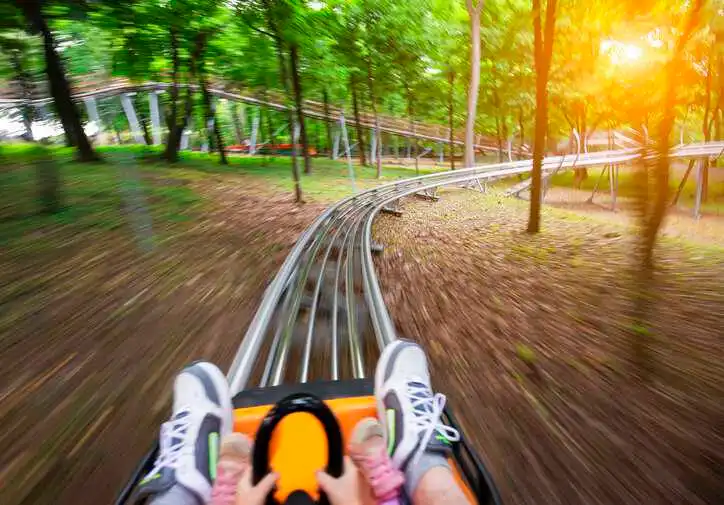ISO 1902-1:2017— Summer Toboggan Runs

Do you know what can be found at a ski resort, amusement park, and a state park? The answer is summer toboggan runs. These fast-paced rides use a bobsled-like sled or cart to run down a track usually built on the side of a hill. ISO 1902-1:2017— Summer toboggan runs – Part 1: Safety requirements and test methods details safety requirements and test methods of summer toboggan runs and their components
What Is the Longest and Fastest Summer Toboggan Run in the World?
One of the longest summer toboggan runs in the world is the Alpine Coaster Imst, which has a length of over 3.5 kilometers, the ride on this summer toboggan run takes around 10 minutes; one of the world’s fastest toboggan run is considered the Fisser Flitzer in Fiss, Austria, which reaches speeds of up to 45 kilometers per hour (km/h). Quality controls and standards like ISO 19202-1:2017 assure the safety of these long and fast summer toboggan runs for us to enjoy riding on our next vacation.
What Is ISO 19202-1?
ISO 19202-1:2017 specifies the safety requirements for planning of track, design, calculation, manufacturing, erection, testing, and commissioning of summer toboggan runs and their components. The standard defines summer toboggan runs as “sports facilities with an inclined guided downhill track, on which the user passes a difference in height by user’s dependent speed control, to a limited velocity and descending by gravity.”
It is important to note that the sledding usually implies for users a remaining risk comparable to sports activities such as bicycle riding, alpine skiing, and rope courses. ISO 19202-1:2017 details that there is risk inherent with summer toboggan runs because active independent actions without supervision are necessary on tracks in order to control descents (distance control and braking), and posture and balance are needed to assure the balance between centrifugal and gravitational force.
Safety Requirements for a Toboggan
ISO 19202-1:2017 specifies that a toboggan should be designed in such a way that no unexpected forces occur as a result of changes in transverse gradients, curves, crests, or depressions and as a result of wear. Additionally, the standard maintains that it should be assured that the toboggan is decelerated if the user is not using the toboggan control elements. In regards to user experience, ISO 19202-1:2017 details that a toboggan’s passenger compartment should be designed in such a way that the user is properly seated and kept on the toboggan (e.g., backrests, armrests). The toboggan should also provide handles and have a seat with lateral reinforcement and footrests.
Why Is It Called a Toboggan?
The use of the word “toboggan” dates back to the 1820s. It is a French-Canadian adaption of an Algonquian word, most likely Mi’kmaq tepagan or Abenaki dabôgan. The word was used to describe a long sled with a curled front end and no runners. The sled was pulled with a cord and used for hauling supplies or equipment and sliding down hills.
North Toboggans vs Southern Toboggans
Depending where you live in the world, the word “toboggan” may mean a wooden sled that can be pulled by a rope, or a knitted wool hat. In northern climates, “toboggan” typically refers to a sled used for winter sports and hauling supplies; in the American south, where snow is rare, “toboggan” became the primary term for a knitted hat.
The first recorded use of the word “toboggan” for a knitted, wooly hat was in 1929; it is thought that it was first used in this sense in Appalachia. It was called a toboggan hat or cap and then shortened to simply toboggan. Unlike a beanie which can be made from all types of materials, a toboggan hat is, and can only be, a knitted wool winter hat.
ISO 1902-1:2017— Summer toboggan runs – Part 1: Safety requirements and test methods is available on the ANSI Webstore.






